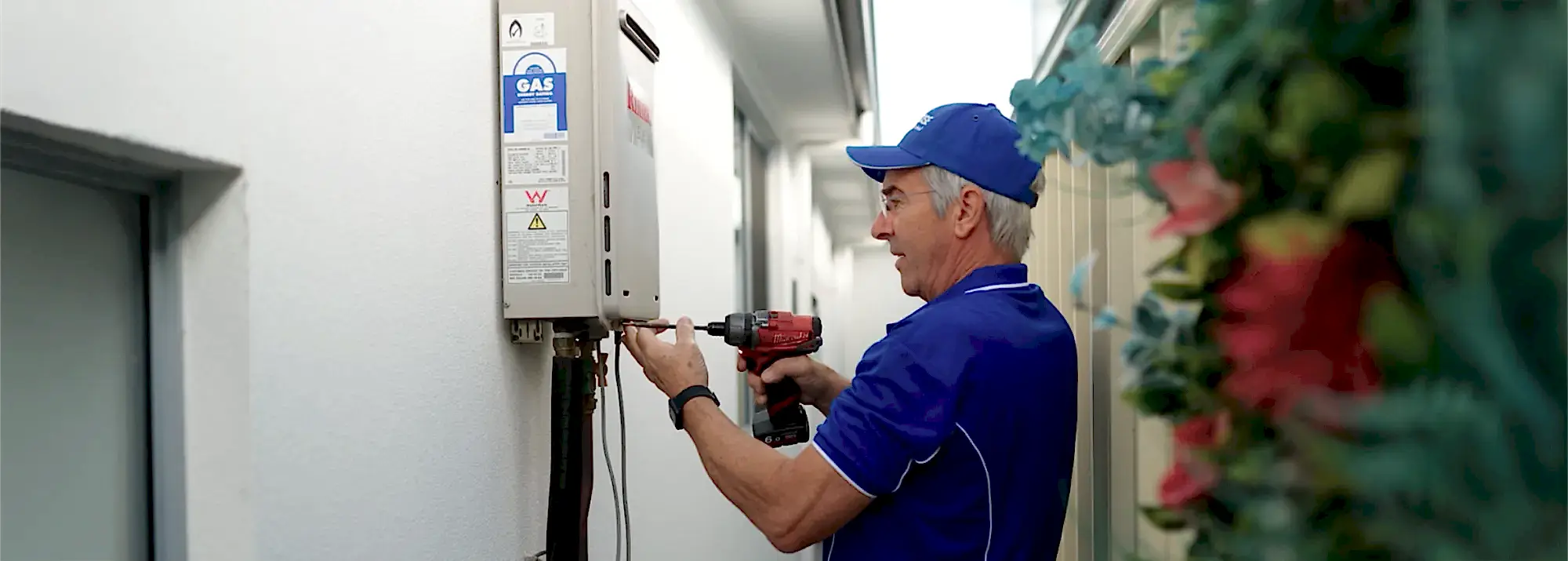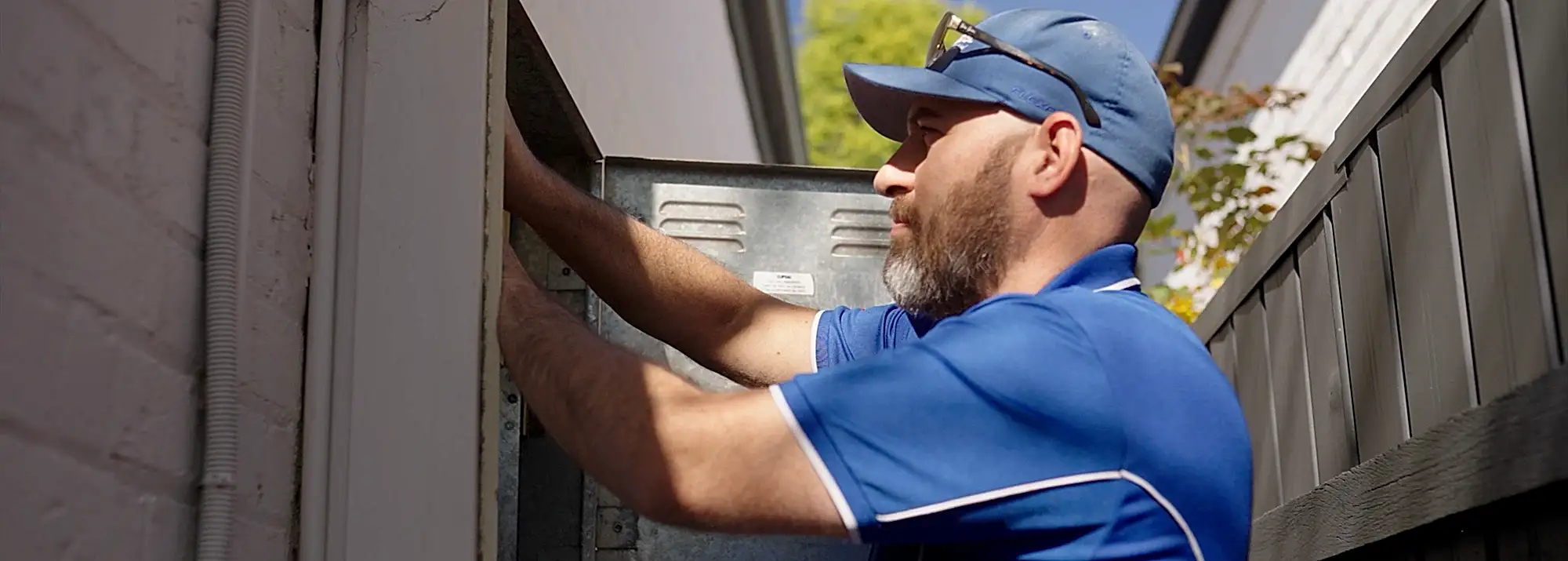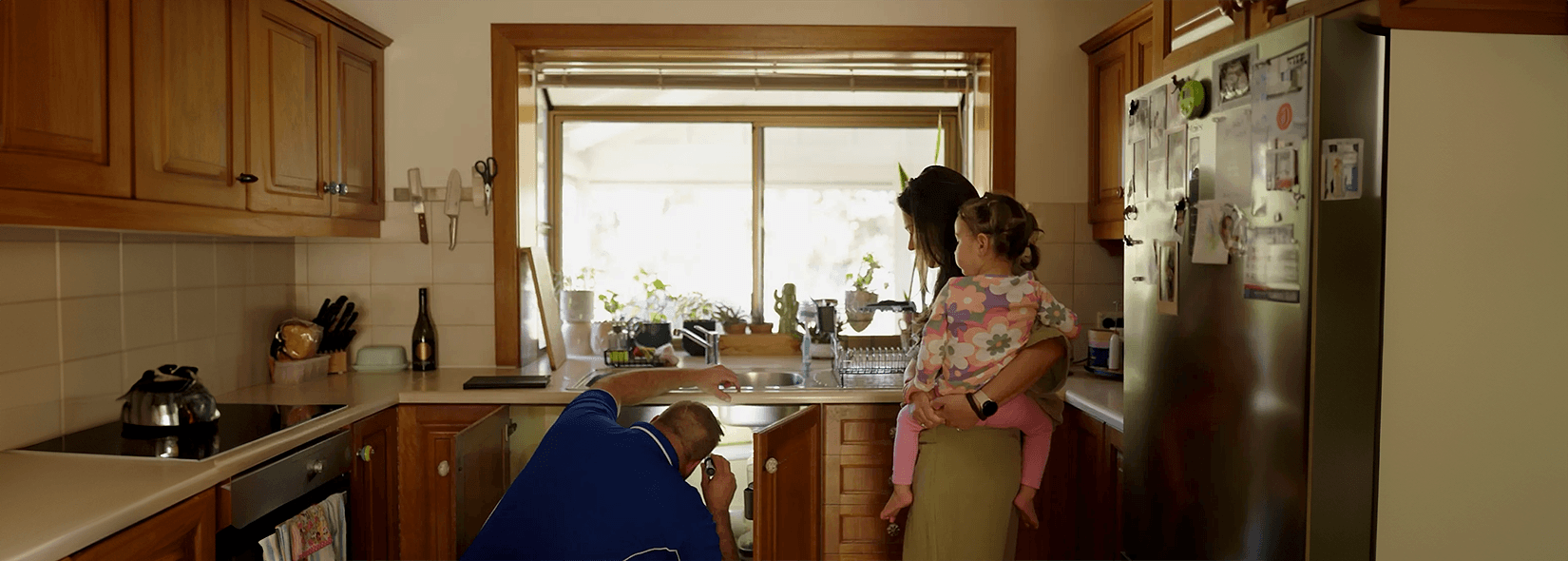Prepare Your Home for Winter Adelaide: Plumbing & Electrical Checklist to Get Ready for the Cold
As temperatures begin to drop in Adelaide, it’s the perfect time to prepare your home’s plumbing and electrical systems for winter. While we’re lucky to avoid snow and extreme freezes (aside from parts of the Hills), the seasonal shift can still lead to unexpected breakdowns, higher energy bills, or even safety risks.
This comprehensive winter preparation checklist focuses on what matters most during the winter months — keeping your plumbing and electrical systems in peak condition to get you through the colder months comfortably and safely. It is crucial to ensure that any room heaters you use are approved and meet Australian Standards for safety. Many of these tasks can be carried out by a homeowner with basic tools and a bit of know-how. Where needed, we’ve highlighted when to call a professional.
1. Service Your Hot Water System
- Check your system for signs of rust, leaks, or corrosion
- Have your system flushed to remove sediment buildup
- Get it professionally serviced to ensure it operates efficiently and avoid cold showers mid-winter
DIY Tip: You can check for leaks or visible rust yourself and ensure the area around your system is clear of clutter. For flushing or detailed maintenance, call a licensed plumber.
Why it matters: Cold water in the middle of winter isn’t just uncomfortable — it could signal a costly breakdown on the way.
2. Book a Switchboard & Safety Check
- Inspect for signs of ageing or faulty wiring
- Ensure safety switches are installed, operational, and properly marked for easy identification
- Have an electrician check load capacity and trip history
DIY Tip: Test your safety switches monthly by pressing the “test” button. If they don’t trip, it’s time to call an electrician.
Why it matters: Winter often means more heating and appliance use, which can overload outdated electrical systems.
3. Check for Leaking Taps and Toilets
- Look for constant drips, running toilets or pooling around fixtures
- Test water pressure — too high can stress pipes and fittings
- Get repairs done before leaks turn into water damage
DIY Tip: Check under sinks and behind toilets for any signs of water pooling. Use food dye in the cistern to detect silent toilet leaks.
Why it matters: Small leaks cost you in water bills, can worsen in cold weather, and put extra strain on your plumbing.
4. Test All Lights, Power Points & Appliances
- Plug in and test all heating devices and lighting
- Check external lights — vital during dark, early nights
- Replace flickering bulbs and faulty power points
Why it matters: Faulty lighting or heaters during winter evenings is more than an inconvenience — it’s a safety risk.
5. Test and Maintain Electric Heaters
- Plug in and test all portable or built-in heaters. Ensure that all heaters are approved and meet Australian Standards for safety.
- Ensure wall-mounted units are free from dust and obstruction
- Avoid using double adaptors or overloading circuits
DIY Tip: Clean dust from heater grilles and vents with a soft brush or vacuum to improve efficiency and safety.
Why it matters: Many winter house fires start with overloaded heaters or faulty appliances.
6. Clean Your Exhaust Fans and Bathroom Vents
- Remove dust and buildup from kitchen, laundry and bathroom fans
- Make sure the fan turns on and off properly
- Check for signs of mould in vented areas
DIY Tip: Use a damp cloth or vacuum with a brush attachment to clean vents and exhaust covers.
Why it matters: Winter creates more indoor moisture — good ventilation prevents mould and damage.
7. Inspect and Clear Stormwater Drains
- Clear leaf buildup from stormwater pits and grates
- Check that downpipes connect properly to drains
- Have blocked drains professionally cleared if needed
DIY Tip: Use gloves and a small hand rake to scoop out leaves and debris from surface drains and grates.
Why it matters: Heavy winter rains can overwhelm blocked drains and cause localised flooding.
8. Prepare for Power Outages
- Keep a torch and spare batteries handy
- Know where your switchboard and main fuse are
- Consider installing a surge protector for sensitive electronics
- Use generators outdoors to prevent hazards like carbon monoxide poisoning
DIY Tip: Create a small power outage kit and show family members how to locate the main switch.
Why it matters: Storms and blackouts are more common in winter — be prepared, especially with young kids or elderly at home.
9. Get Your Drains & Sewer Lines Checked
- Watch for slow-draining sinks, gurgling toilets or foul smells
- Tree root intrusion worsens in cooler, wetter months
- Consider a CCTV inspection if you’ve had issues in the past
DIY Tip: Pour boiling water down drains occasionally to help clear minor build-up. Avoid chemical drain cleaners.
Why it matters: Sewer line blockages are more common in winter — don’t wait until it’s too late.
10. Review Your Smoke Alarms
- Test all smoke alarms monthly
- Replace batteries at the start of each season
- Upgrade to interconnected alarms if needed
DIY Tip: Use a broom handle to press the test button. Write the install date on the side of each alarm.
Why it matters: Heating appliances increase fire risk — functioning smoke alarms save lives.
11. Install a Carbon Monoxide Alarm (If You Use Gas)
- Essential for homes with gas heaters or hot water systems
- Install alarms near bedrooms or living spaces
- Test the alarm regularly
DIY Tip: CO alarms are easy to install and available from major retailers. Follow placement instructions closely.
Why it matters: Carbon monoxide is odourless and deadly — and more dangerous in sealed winter homes.
12. Label Your Water and Power Shut-Offs
- Know where your mains tap and switchboard are
- Teach everyone in the house how to shut things off in an emergency
- Clearly label all circuit breakers
DIY Tip: Use a waterproof marker or printed labels to identify each breaker in your switchboard.
Why it matters: In an emergency, fast action can prevent further damage.
13. Create an Emergency Contact List
- Keep numbers for your plumber and electrician handy
- Include SA Power Networks for outages: 13 13 66
- List contact details on the fridge or in your phone
DIY Tip: Include key info like your home’s water meter and electrical meter number for quick reference.
Why it matters: Don’t waste time searching when something goes wrong.
Winter Heating Options
When it comes to winter heating options, there are several choices available, including gas heaters, electric heaters, and heat pumps. Gas heaters are effective but require proper ventilation to prevent carbon monoxide poisoning. Electric heaters are generally safer but can be more expensive to run. Heat pumps are highly efficient but may need more maintenance. When selecting a heating option, consider factors such as heating costs, safety, and environmental impact. Ensuring your home is well-insulated and draft-free will also help minimize heat loss and reduce the risk of fires. Choose the best option for your family’s needs to stay warm and safe this winter.
Home Insulation and Drafts
Proper home insulation and draft-proofing are vital to maintaining a warm and safe home environment during the winter months. Insulation helps to reduce heat loss, while draft-proofing prevents cold air from entering your home. Seal gaps and cracks around windows, doors, and pipes, and install insulation in your roof, walls, and floors. Using curtains, blankets, and bedding can also help keep your home warm and cozy. Ensure your home is well-ventilated to prevent moisture buildup, which can lead to mould and other hazards. By taking these steps, you can reduce your heating costs, minimize the risk of fires, and create a warm and safe home environment for your family.
Energy-Efficient Appliances
Using energy-efficient appliances is an excellent way to reduce your heating costs and minimize your environmental impact. Look for appliances with high energy ratings, such as hot water systems, refrigerators, and washing machines. These appliances use less energy while still providing the same level of performance. Consider using power-saving devices like timers and thermostats to optimize your energy usage. Regular maintenance of your appliances is essential to prevent accidents and reduce the risk of electric shock. By using energy-efficient appliances and devices, you can lower your energy consumption, reduce your bills, and contribute to a more sustainable future.
Friendly and Professional Services
At Precise Plumbing and Electrical, we pride ourselves on providing friendly and professional services to our customers. Our team of qualified technicians is dedicated to assisting you with all your hot water needs, from installation and repairs to maintenance and servicing. We understand the importance of having a reliable and efficient hot water system, especially during the winter months. That’s why we offer a range of hot water systems, including gas, electric, and heat pump systems, to suit your needs and budget. Our technicians are careful, efficient, and respectful of your property, ensuring that you receive the best possible service. We also provide special offers and discounts to our customers, so be sure to contact us to learn more about our services and how we can assist you with your hot water needs.
Final Thoughts
Winter in Adelaide might be mild compared to snowier states, but that doesn’t mean your home’s plumbing and electrical systems can take a break. With a little planning and a few preventative checks, you can keep things running smoothly all season long.
There are many practical steps you can take yourself to prepare for winter. For everything else, contact the team at Precise Plumbing and Electrical. We proudly service homes across Adelaide, providing licensed, reliable, and local support to keep your home safe and functional all winter long.










